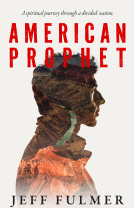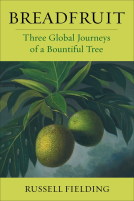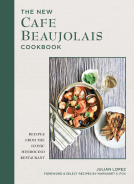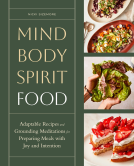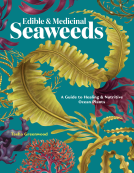
Gimblett’s Guide to the Best of British Cheeses
British Artisan Cheeses and their Producers
by Francis Gimblett
This title was previously available on NetGalley and is now archived.
Send NetGalley books directly to your Kindle or Kindle app
1
To read on a Kindle or Kindle app, please add kindle@netgalley.com as an approved email address to receive files in your Amazon account. Click here for step-by-step instructions.
2
Also find your Kindle email address within your Amazon account, and enter it here.
Pub Date 23 Oct 2020 | Archive Date 15 Dec 2020
Troubador Publishing Ltd. | Matador
Talking about this book? Use #GimblettsGuidetotheBestofBritishCheeses #NetGalley. More hashtag tips!
Description
Do you know your Suffolk Blue from your Brighton Ewe? Perhaps you prefer Nanny Muffet to Dumpling? These are just four of the cheeses that are featured in Gimblett’s Guide to the Best of British Cheese.
The first guide to do for cheese what wine guides have done for the best wines each year, Gimblett’s Guide to the Best of British Cheese is the most comprehensive collection of British artisan cheeses yet published, including eighty producer biographies and over 230 cheese profiles with compressive tasting notes, drink matches and photographs. The author personally visited every cheesemaker featured and is the founder of The Campaign for British Artisan Cheese.
This file is compatible with an Apple iPad and Kindle Fire only.
A Note From the Publisher
Available Editions
| EDITION | Ebook |
| ISBN | 9781800467927 |
| PRICE | £8.99 (GBP) |
| PAGES | 200 |
Average rating from 7 members
Featured Reviews
Who could resist cheese tasting notes of "rice pudding, baked plum, apricot and Victorian sponge", "Brazil nut, pigeon breast and hay" or "seared chanterelle, wildflower with salted caramel"? Not me! This beautiful, wonderful and fascinating book is practically edible...the pictures and descriptions are that delectable!
The author, a cheesemaker himself, visited 80 producers and documents the 230+ cheeses they make. These are special people with drive and passion as cheese making usually doesn't make one rich. Reasons for creating artisan cheese and six ways we are stopped from doing it are listed at the back of the book.
Each section shows the cheese maker and describes the operation and the type/combination of milk(s) used. Different rinds such as nettles are discussed as is storage and other information. The next page(s) lists the cheese(s) and describes the type of milk, type of rennet used, age, style (soft, hard, etc.), size, producer websites and what to drink with the cheese.
Some of my favourite cheese names include Merry Wyfe, Blue Murder, Gallybagger and Miss Muffet. Of course you will find buffalo mozzarella, Wensleydale and Cheddar. Cheese is a big deal for me, especially artisan, and therefore when traveling always seek out the various local cheese which can vary from batch to batch depending on what the animal eats and weather.
I will definitely buy this book to place on my Cheese book shelf! If you are even just slightly interested in cheese you will learn a lot. And if you are an aficionado, you will be rabid about it! It is an excellent reference book you can pull out and look up information.
My sincere thank you to Troubador Publishing Ltd. and NetGalley for providing me with a digital copy of this incredible book in exchange for an honest review. Much appreciated.
If you are yourself a lover of excellent regional cheeses or know someone who is, please do consider picking up a copy of 'Gimblett's Guide to the Best of British Cheeses' by Francis Gimblett.
The understated and unassuming cover (the colour itself rather reminiscent of a young cheese rind) reveals a beautiful interior. This book would appeal to anyone with a fondness for cheese as well as cooks, chefs, restauranteurs, delicatessen owners, and food bloggers, and would do well at farmers' markets and cooking schools, as well.
While most guides (and certainly ones of this breadth) can feel rather encyclopaedic, the layout is very light-handed and artistic. The book opens with a guide to terminology and symbols (all nicely intuitive, but helpful to anyone less familiar with tasting guides) as well as a small introduction to cheesemaking methods and types of cheeses.
The guide is organised alphabetically, grouped by producer. I particularly like that the producers' splash page includes links to their social media and website, followed by a short but comprehensive biography. The cheeses produced are then listed in a succinct, classic single-page guidebook page featuring: Age At Release; Style; Rennet; Milk Type (including breed); Weight (of whole cheese); Shape; Tasting Note; Where To Buy; and What To Drink.
I'm an avid cheese lover (and on the lower end of the supertaster scale, meaning I get all the taste bud benefits without being as put off by strong / pungent flavours as some supertasters), and have tasted a rather embarrassing number of the offerings in this book. I have used the Bath Soft Cheese Company's offerings as my main assessment guide to Gimblett's accuracy (though of course, taste is extremely personal), as I have been eating these cheeses fairly regularly for years, am familiar with the producer from various farmers' markets, and their distribution is broad enough to be relatively accessible, at least throughout the South of England. Better yet, I had a couple in my fridge, ready to compare.
For 'Bath Soft Cheese', Gimblett mentions tasting notes of 'shitake mushroom', 'double cream', 'hazelnut', and 'white chocolate'. I pick up on all but the white chocolate, though there's something of the cocoa butter mouthfeel, so it isn't a far stretch. I pair this with off-dry whites, one of the wines Gimblett recommends; so far, so good.
The washed rind 'Merry Wyfe' warrants descriptions of 'sweet game, cep mushroom' and 'day-old sock' (in, says Gimblett, a 'delightful' way - and he isn't wrong) with the core including 'creamy hazelnut and vanilla'. I don't pick up much in the way of vanillin, though I do pick up a bit of toffee or, more accurately, crème brûlée. Like Gimblett, I find the cheese 'outstanding', and enjoy it with cider (one of his recommendations).
Other familiar cheeses match my recollection, and I'm very pleased to see the inclusion of some smaller producers from across the UK, many of which are new to me (and give me some new cheeses to explore).
I note (and perhaps I am mistaken) two Welsh producers. England is well-represented, and Scotland likewise. There appears to be only one offering from Northern Ireland. Many of the producers are from the South West, South East, and South of England, but these are also the regions most likely to distribute their cheeses the most widely.
All in all, an excellent guide book with spot-on reviews, a very pleasing and easy-to-read layout, and beautiful photography. Very much recommended.
Advance reader copy kindly provided by Matador @matadorbooks
 JC S, Educator
JC S, Educator
If you like artisan cheese then this is the book for you! Francis Gimblett has taken the time to create this wonderful guide to a vast range of artisan cheeses from all over Britain. The introduction explains his tasting notes and how he scores each cheese. He has included cheeses using milk from cows, sheep, goats and buffalo. He explains the different primary categories of cheese e.g. fresh, unripened cheese; soft cheese; semi soft; semi hard and hard, as well as the secondary categories of bloomy rind; washed rind and blue cheese.
Each cheesemaker is listed alphabetically. He begins by giving a brief, interesting history of the cheesemakers and how they started out. Each of the included cheeses details its age at release; type of rennet; milk type; tasting notes; where to buy and what to drink with it. Alongside all of this is a great photo of the cheese.
At the end of the book there is a note about the Campaign for British Artisan Cheese. I know from experience that there are several artisan cheese subscriptions that support this cause. A fascinating book that will make you want to try out more unusual cheeses.
Thank you to Francis Gimblett, Net Galley and Troubador Publishing Ltd for an ARC in exchange for an honest review.
 Beth C, Reviewer
Beth C, Reviewer
I received a galley of this book via NetGalley.
I am a passionate, obsessive cheese-lover with a goal of trying and documenting most every cheese that I can get. This book felt absolutely accessible for a layperson like me, but would also be great for a professional cheesemonger or cheesemaker. It's for anyone who loves cheese.
<i>Gimblett's Guide</i> is a straightforward who's-who of the best makers of British artisan cheeses. The book is loaded with bright, drool-worthy photographs. The author spends a page or two describing the cheesemakers and their work, then gets down to the business of describing their highlighted cheeses. There is a lot of fantastic information packed in here--80 cheesemaker biographies, over 230 detailed cheese profiles. These cheeses run the gamut in milks and types, with fairly balanced coverage. Whether you love or hate blues, or washed rinds, or goat, or sheep, or buffalo, there's a bit of everything. These are the best of the best.
Really, this book read like a big wish list for me. I felt like a child presented a Christmas catalog and who then proceeds to circle 95% of the toys. That is me, with cheese. Unfortunately, I am in America, so acquiring and tasting many of these cheeses will be a challenge--but one I am up to. I have tried a few of the cheeses before and heard of many others, and wow, this book introduced me to a lot more.
This is a worthy reference book to shelf alongside other trusty cheese manuals like Steven Jenkins's Cheese Primer and the Oxford Companion to Cheese.
 Educator 317339
Educator 317339
This cheese guide was much more entertaining to read than I expected. I learned a great deal about how different cheeses are made, and the taste descriptions reminded me of wine descriptions (if wine were made of milk). Now there are a whole lot of cheeses that I really want to try!
 Reviewer 599455
Reviewer 599455
Many thanks to the author, publishers and Netgalley for a free ARC of this ebook.
A thoroughly enjoyable exploration of British cheese. Very detailed and encyclopaedic in its scale and scope.
Highly recommended for foodies and anyone interested in Britain's food heritage.
Readers who liked this book also liked:
Eric D. Sanchez
Cooking, Food & Wine, Entertainment & Pop Culture, Mystery & Thrillers
Jeff Fulmer
General Fiction (Adult), Politics & Current Affairs, Religion & Spirituality
Julian Lopez
Cooking, Food & Wine, Crafts & Hobbies, Nonfiction (Adult)
Jeff Fulmer
General Fiction (Adult), Politics & Current Affairs, Religion & Spirituality
Tasha Greenwood
Cooking, Food & Wine, Health, Mind & Body, Outdoors & Nature

